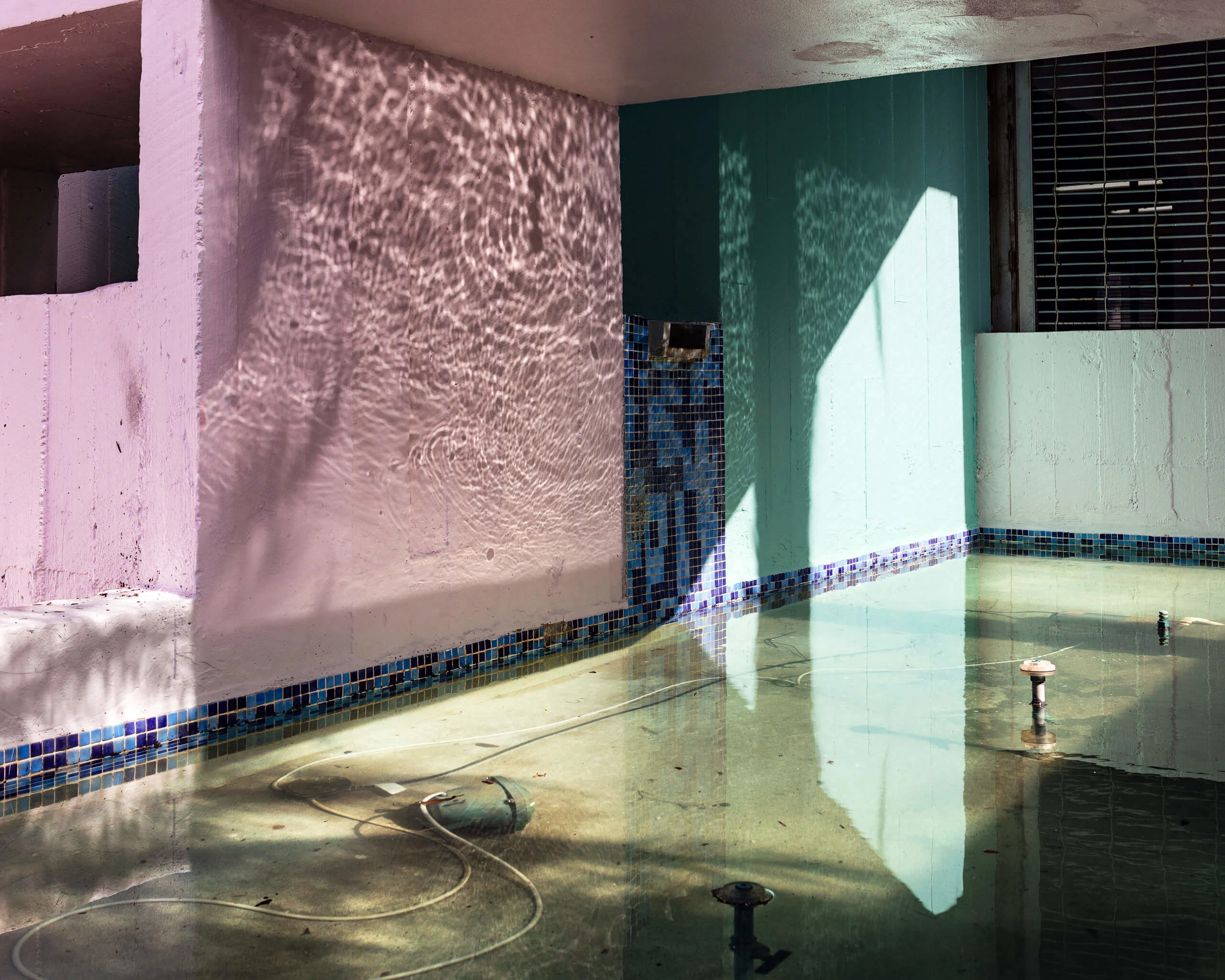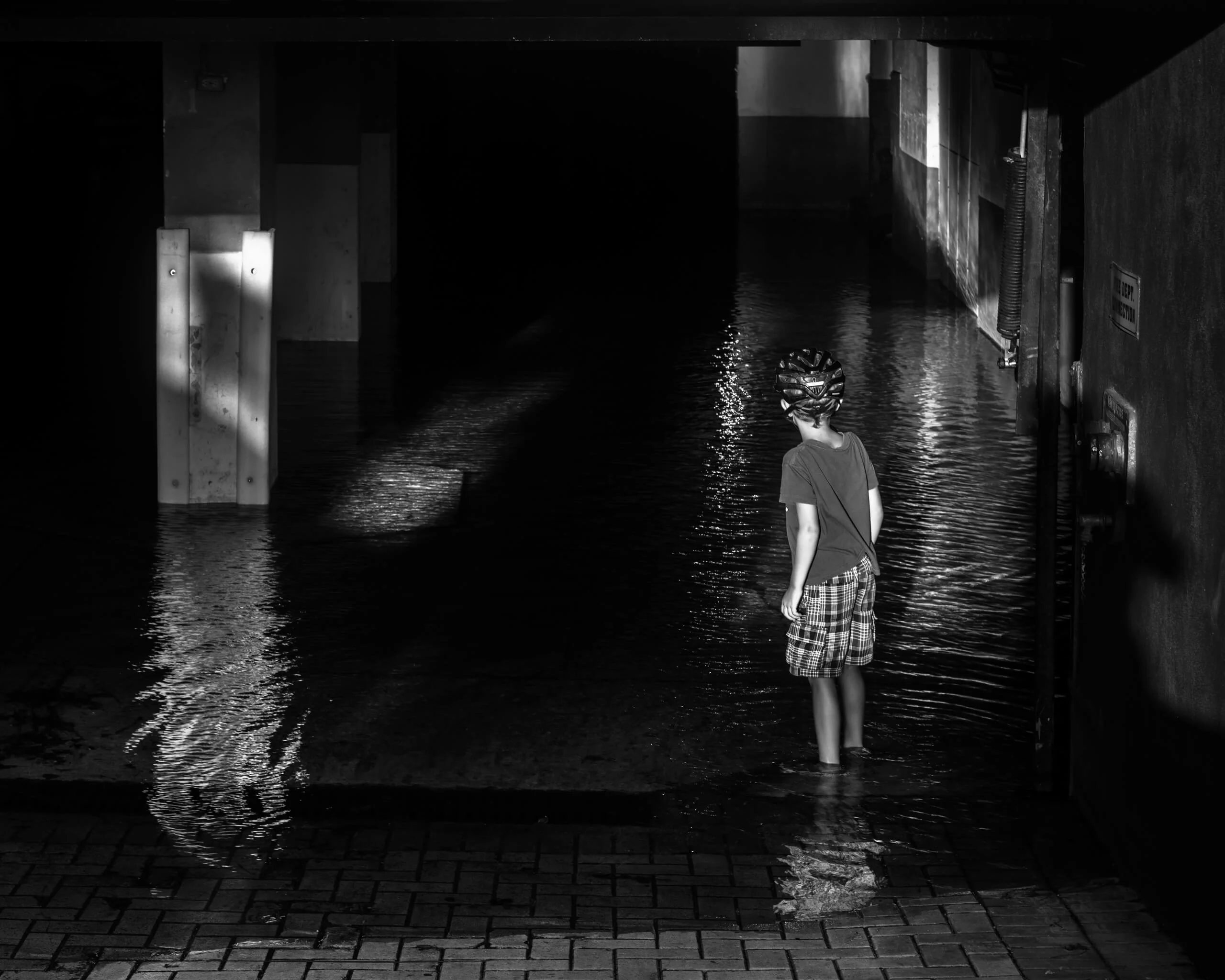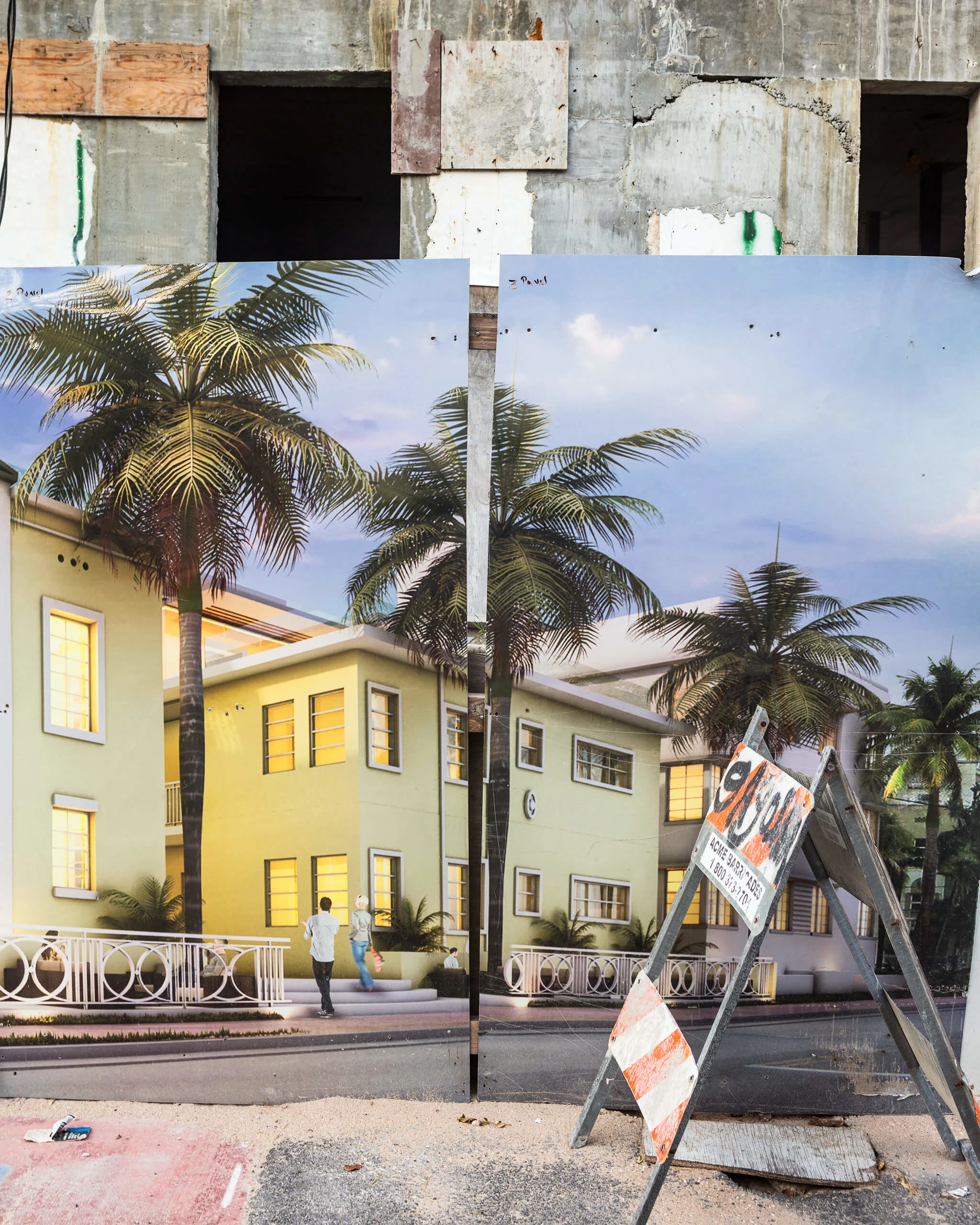

Miami is one of a number of places that are dangerously close to being overcome by the elements around them, as climate change continues to take hold. Alex Kahl talks to photographer Ana Samoylova about her series Floodzone, where she explores not only Miami itself, but responses to rising sea levels around the world.
Photographer Ana Samoylova grew up in Moscow, “in one of those unremarkable tall concrete block houses”. In 2016 she moved to a city that is perhaps the antithesis of her childhood home - Miami. And when she moved to Florida’s playground, her preconceptions of the place were wide of the mark. When you hear the name, having not visited it, it’s easy to think of sun-drenched palm trees, gorgeous, pristine coastlines and Hawaiian shirts open to the navel.
Ana, though, soon noticed that flooding, extreme weather and rising sea levels were far more prevalent themes there. “Growing up in a busy city as I did makes you appreciate an escape to a different environment that much more,” she says. “Perhaps that’s why I’m so attuned to the details in my surrounding space.”

The summer she arrived, it was the hottest on record, and the humidity was overbearing. “Miami is a microcosm where political, economic, and environmental issues seem to be amplified by the intense heat of this tropical, increasingly warming climate,” she says. “It feels like the marshes, the sea, the jungle might reclaim the place anytime.” She could immediately see that the subject of climate change was impossible to avoid in Miami, but was shocked at how little the problem was discussed outside the city. “It affects people on a very personal level. Most of us had to develop adaptive methods, figure out how to live with it, and what to plan for in the future,” she says. In Ana’s own experience, Miami can be a paradise, but it can also be a place where her young son ends up knee-deep in water in her building’s flooded basement garage, after a disastrous hurricane. The potential for devastation hangs over the city like a shadow.


Ana’s firsthand experience of the issues led to her researching the subject, and for her latest series Floodzone she photographed her surroundings in Miami, as well as travelling to photograph other coastal communities already affected by the rising seas. Sprawling aerial shots of wide scale flooding and of airplane runways inches from going under sit alongside photographs focusing on Miami and its many contradictions, offsetting its beautiful appearance against its menacing flood risk.
The project was informed by her previous series, Landscape Sublime, which involved taking stock imagery of scenery, printing each one and assembling it as a sculpture, and then re-photographing it. “I like the idea that the work can be simultaneously liberated from realistic depiction, yet grounded in the material world,” she says. “Photography, like no other medium, points to the reality of time and space. But this reality is itself a construct. Landscape Sublime bends time and space in one image. They are truthful records of a made-up world.”



Portraying impending doom in a quiet and poetic way was a conscious decision.
To Ana, Miami feels itself like a made-up world, but on a real-world scale. She speaks of the mass of representations and appearances that precede our real experience of the world and makes it unreal, its glistening portrayal in popular entertainment. “Miami is so layered, so dependent on its own image that I don’t need to build sets anymore, it is quite theatrical already,” she says. “It’s is constantly covering itself in its own ideal image – advertising, tourist imagery, real estate promotion. Miami is nothing without its image.”
Indeed, the most fascinating shots are not those aerial landscapes that show flooding in a literal way, but those that show a more subtle close up of Miami’s own struggle. An entire tree’s worth of leaves floating in a luxurious yet unused swimming pool. A car sat on a driveway, every inch of its body covered by a waterproof sheet.


Ana has taken a unique approach to the subject of climate change and rising sea levels. Much of the imagery around these themes is imbued with tragedy and drama, and is as hard-hitting as it is thought-provoking. Ana’s images, though, are subtle and understated, a different perspective on the subject. “Portraying impending doom in a quiet and poetic way was a conscious method to avoid any sort of sensationalism or disaster reportage,” she says. “I am after a slower contemplation. I think when we see tragedy portrayed over and over in the same way, it can become just another cliché lost in the white noise.”


Other shots in the series show run-down or unfinished buildings slightly visible behind huge posters showing the idyllic property that is planned, or was being planned, to be built in their place. Miami’s real estate culture involves selling the most desirable properties closest to the waterline, with investors “turning a blind eye to the reality that Miami is steadily slipping underwater,” Ana explains.
Ultimately, the photos of Miami emphasise the problems the city is facing, and these real estate shots in particular show the desperation to cover up, or maybe to blindly deny, the realities. But, based on Ana’s imagery, Miami’s mask is slipping.

